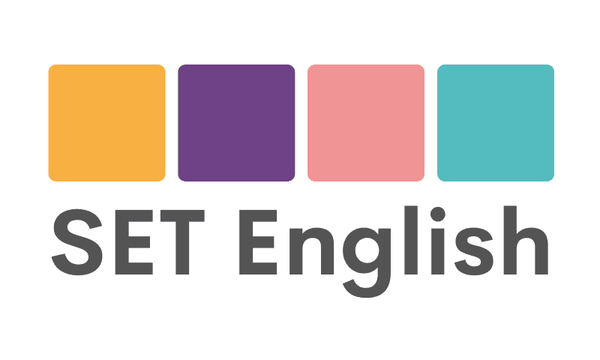
OET Reading: It's not about time - it's about language
Grammar and the OET Reading Test
The OET Reading test is tricky!
One of the biggest complaints I hear from students at SET English is:
‘There isn’t enough time!’
And, although I understand why students say this, one day I asked myself:
“Why do I have enough time and my students feel like they don’t?’
The most natural answer to this is that I am a native English speaker. I have an advantage over most test-takers. However, I don’t think this is the whole answer.
Let’s explore this further.
What advantages do native speakers have?
- Vocabulary
Yes, it is true that native speakers generally have large vocabularies and it is important in the OET Reading test. Here is a list of ten random words that I have just picked from a Reading part C:
- commonplace
- evoke
- chore
- traverse
- adversely
- nuance
- fleeting
- passively
- preoccupations
- abate
They are not medical words! So, it’s really important to read, read and read some more outside of your classes and test practice. Learn these words - they will be useful! At SET English we often repeat this advice and help students to find resources inside and outside class.
2) Grammar
The biggest advantage that native speakers have over non-natives is the speed of understanding. That is a huge skill in a time pressure environment like the OET test.
This is why we do daily grammar classes at SET English!
Let’s break down a typical OET Reading Part C sentence and a question:
Pregnancies that are complicated by sub-optimal conditions in the womb, such as happens during pre-eclampsia or placental insufficiency, enforce physiological adaptations in the unborn child and placenta.
Question: What is said about complicated pregnancies?
- Pregnancies with sub-optimal conditions are likely to involve pre-eclampsia.
- Complications during pregnancy are likely to result in changes to the womb.
- Changes to both baby and placenta are the result of sub-optimal conditions during pregnancy.
- Placental insufficiency is the result of changes during sub-optimal conditions in the womb.
The sentence features medical language, complex vocabulary, multiple clauses, the passive voice and noun phrases!
The question features options that seem very similar.
It is scary!
OK. So, how can we help ourselves to choose the correct answer? Let’s get back to the grammar basics!
SET English believe should always try and understand what happens in a sentence. This means thinking about the subjects, objects and verbs.
Quick tip:
- A subject does an action. It can be made up of more than one word, which is called a noun phrase.
- An object receives an action. It can be made up of more than one word.
- A verb is an action word.
In the above paragraph the subject is:
Pregnancies that are complicated by sub-optimal conditions in the womb
and the verb is:
enforce
So we should expect an object! What does the subject enforce?
The object is:
physiological adaptations in the unborn child and placenta.
Another small complication in that sentence is this section:
such as happens during pre-eclampsia or placental insufficiency,
This is a section of the sentence that gives examples of situations in which sub-optimal conditions can occur. It doesn’t need to be in the sentence. It is extra information. ‘such as/ including’ always do this.
I know you won't believe me but that sentence is basically the same as this:
Paul eats bananas.
Don't laugh! It is! It has the same structure: subject + verb + object
So, now we know what happens in the sentence, we can be confident that we can answer a question! Let’s look at the question from earlier and see which options match our understanding now:
Question: What is said about complicated pregnancies?
- Pregnancies with sub-optimal conditions are likely to involve pre-eclampsia.
- Complications during pregnancy are likely to result in changes to the womb.
- Changes to both baby and placenta are the result of sub-optimal conditions during pregnancy.
- Placental insufficiency is the result of changes during sub-optimal conditions in the womb.
And of course, the answer is C!
Being good at OET Reading requires a range of skills but at SET English our advice is to improve your grammar. Learn about sentence structure, with conjunctions and types of clause. Learn about contrast, results, causes and addition. Tense and the passive help massively too!
Ultimately, reading is about understanding. Learn to understand more and your OET reading scores will improve.
Come and check out all of the grammar you need at SET English!
Paul
